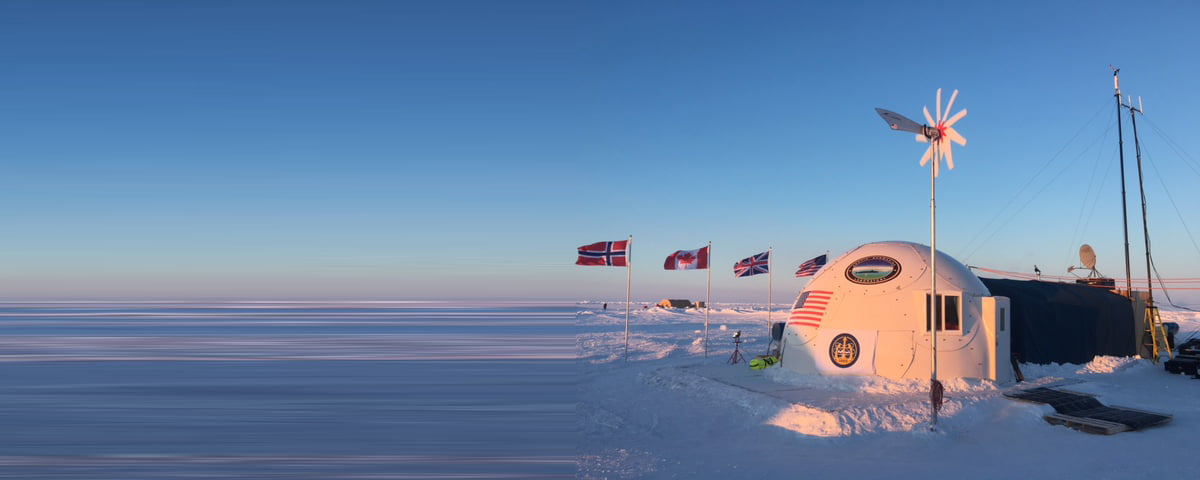Urban Wind Making a Comeback?
About 2 years ago, I got a call from a local homeowner asking if we could help troubleshoot why his turbine was not generating electricity. I said we typically work on commercial only, but he was very frustrated and seemed to be a genuinely nice person – and local. So, I agreed to see if we could lend a hand.
I stopped by the next day to take a look at his installation. The turbine was a 5-blade 1.5 kW Chinese model I had not seen before. It was mounted on a heavy duty 30 foot steel pole, bolted to a solid concrete foundation. The inverter was a legacy Power One inverter (now ABB). No batteries – grid connected. The connections looked good and the wire routing was decent (not up to our tidy standards, but acceptable). The pole was located near the utility meter and breakers so the wiring run was relatively short. However, the turbine was located directly in front of a large tree with prevailing winds coming over the single story house. Observing the turbine in action, it seemed to always orient back to the same location. It didn’t seem to stay oriented exactly with the wind though. The inverter showed the system was on. Cycling through the LCD display showed zero cumulative energy in the last several months since install. So my concerns were the siting and if the inverter was programmed properly for this turbine. Wind testing was apparently never done.
So, we installed a small pole mounted anemometer with data logger near the turbine. We tested at the same elevation as the turbine, then lower to check winds there. Going higher was not an option due to local codes. The anemometer showed consistent intermittent winds, but at low speeds (6-12 mph) with a prevailing direction about 10 degrees different from what the turbine was observed tracking. Armed with that, we decided to check the inverter next. After troubleshooting with the manufacturer, we ended up modifying the inverter programming to try and match the turbine output better. Unfortunately, there’s no elegant method for doing that on the Power One inverter, except trial and error. So, we set up several curves and honed in on the best results. It took a couple site visits as the wind wasn’t always cooperative with our availability.
As far as inspecting or even maintaining the turbine, we would need a lift which meant added cost. Translation – diminishing returns for a project the homeowner was already frustrated with. So, we agreed to stop there and let the system “earn its keep” for a while.
Like many projects we work on, we are able to identify a lot of design and application improvements we would have made. These may seem obvious, but here goes anyway:
- The turbine was too heavy for an appropriately smaller pole which drives up install and maintenance costs. A lighter weight turbine on a telescoping or pivot mount pole would have been far better.
- The Chinese manufacturer had opposite hours from ours, poor telephone support, email support in broken english – overall poor service. Too many chances of making a bad mistake.
- The siting of the turbine was poorly executed. The homeowner did end up trimming back the tree which helped, but proper testing beforehand would have resulted in a much better outcome. A bit more expensive for the longer wiring run, but far better output.
- The cut-in speed of the turbine was obviously too high for this (or most urban) installation(s).
From an energy output perspective, the big misnomer on small or urban wind turbines is not the rated size (max watts or kilowatts at optimal speed). What matters most is output at the typical wind speeds for the intended location. Case in point, the homeowner’s turbine had a “1500w” turbine (at a rated speed of 26.8 mph). With typically 6- 10 mph winds on this project site, the expected output, from that turbine, would only be around 100w. That’s 1/15th of what most people would expect looking at the product’s label.
As an energy practitioner and sometimes inventor, this little project prompted me to refresh my knowledge of small wind turbines in the market. Aside from country of origin, they are all about the same design. A little after this project, I was introduced to the CEO of a local small wind turbine startup (Primo Wind) looking to flesh out their designs and hopefully go commercial. Interesting timing! After doing a deep dive on the market and the company, I was really pleased. The market opportunity is huge and the company has solved the big hurdles for small wind: i.e. makes power in a gentle breeze (4-5 mph) or gale force (110-120 mph), holds up in near hurricanes, easy install or takedown using lightweight and sturdy telescoping pole with really innovative cantilever pivot. Install by one or two people and no heavy equipment. Reasonably priced product cost with easy and fast installation means low cost of energy production that is very competitive with distributed solar. Bingo. The resurgence of small wind may be upon us.
Note: I liked Primo’s product so much, we decided to dive in and help them scale up commercially. Product info is available here.




Leave a Reply
Want to join the discussion?Feel free to contribute!